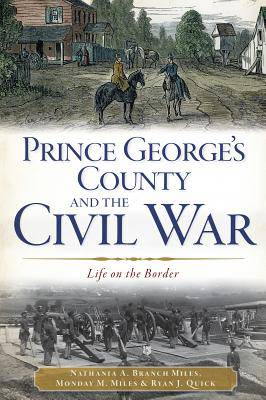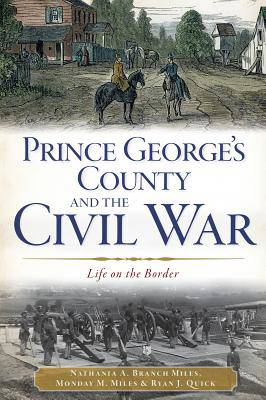
- Afhalen na 1 uur in een winkel met voorraad
- Gratis thuislevering in België vanaf € 30
- Ruim aanbod met 7 miljoen producten
- Afhalen na 1 uur in een winkel met voorraad
- Gratis thuislevering in België vanaf € 30
- Ruim aanbod met 7 miljoen producten
Zoeken
Prince George's County and the Civil War
Life on the Border
Nathania A Branch-Miles, Monday Miles, Ryan Quick
€ 30,95
+ 61 punten
Omschrijving
Bordered by the Federal capital but separated from Virginia and the Confederacy only by the Potomac River, the citizens of Prince George's County found themselves on the front lines of the Civil War. As Maryland's largest slave-owning county, some--including members of the Bowie and Surratt families--joined the Confederacy. Many remained loyal to the Union, losing sons and property for the cause. Three forts in the county were dedicated to the capital's defense: Fort Foote, Fort Washington and Fort Lincoln. This did not prevent Confederate general Jubal Early's troops from invading in July 1864. The Rebel forces blew up rail lines in Beltsville and took the Rossborough Inn near the Maryland Agricultural College--now the University of Maryland, College Park--as their headquarters. Prince George's County and the Civil War: Life on the Border charts the course of a community caught in the midst of the bloodiest conflict in American history.
Specificaties
Betrokkenen
- Auteur(s):
- Uitgeverij:
Inhoud
- Aantal bladzijden:
- 128
- Taal:
- Engels
- Reeks:
Eigenschappen
- Productcode (EAN):
- 9781609498481
- Verschijningsdatum:
- 12/11/2013
- Uitvoering:
- Paperback
- Formaat:
- Trade paperback (VS)
- Afmetingen:
- 150 mm x 226 mm
- Gewicht:
- 226 g

Alleen bij Standaard Boekhandel
+ 61 punten op je klantenkaart van Standaard Boekhandel
Beoordelingen
We publiceren alleen reviews die voldoen aan de voorwaarden voor reviews. Bekijk onze voorwaarden voor reviews.








